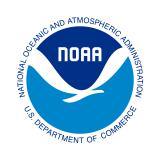Quantifying Contributions of Natural Variability and Anthropogenic Forcings on Increased Fire Weather Risk Over the Western United States
This article in the Proceedings of the National Academy of Sciences of the United States of America (PNAS) was the result of NIDIS-supported research. Learn more about this research.
The western United States has experienced a rapid increase of fire weather (as indicated by vapor pressure deficit, or VPD) in recent decades, especially in the warm season. However, the extent to which an increase of VPD is due to natural variability or anthropogenic warming has been unclear. In this PNAS research article, the authors provide an observation-based estimate that suggests about one-third of the VPD trend is attributable to natural variability of atmospheric circulation, whereas about two-thirds is explained by anthropogenic warming. In addition, climate models attribute about 90% of the VPD trend to anthropogenic warming. Both estimates suggest that anthropogenic warming is the main cause for increasing fire weather and provide a likely range for the true anthropogenic contribution to the western U.S. trend in VPD.






